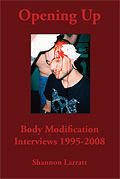Yes, we are back, as of last night actually. Drove about 3,000km in three days, with me doing all the driving of course. But it was actually very nice, really scenic, and not at all tiring. The whole thing was a surprising breeze. Even got to see the amazing double rainbow (yes the photo is mirrored, because I could only catch half of it in my camera, but other than that the photo is gloriously real and it was very cool thing to see) while at the end (middle?) of our trip in Camden, South Carolina. I’m going to take a day or two now to rest, and then the work begins in earnest — both helping to get BME back to what it should be, and also working hard to wrap up all of my writing projects while there’s still gas in the tank so to speak.

Popular Science just published a fascinating walk-through gallery on converting Pepto-Bismol pink digestive pills into ingots of bismuth metal (here’s the video from chemlife they based the article on, from which I discovered it’s also quite easy to make bismuth crystals) — this caught my attention because the rings that I make are a tin-bismuth alloy. This got me thinking how amazing it would to actually make a skull ring out of Pepto-Bismol pills. As they point out, a two-pill dose of Pepto-Bismol contains 262 milligrams of bismuth subsalicylate, about an eigth of which converts into pure bismuth. What that means is that it takes about seven and a half pills to make a gram of bismuth metal, and since my skull rings weight in the neighborhood of 60-70 grams (450 to 525), figure it’s going to take me a solid 600 pills, assuming our pills are about the same size and assuming that there’s some loss when I do the process. Plus a day of home chemistry, assuming everything works.
The procedure seems fairly simple. First, take all those pills and grind them up into a powder. That powder gets dissolved into a solution that is six parts water and one part concentrated muriatic acid (ie. “spirits of salt” or hydrochloric acid, available in the paint aisle of the hardware store). That gets slowly put through a coffee filter, which leaves a clear pink solution with a ton of dissolved bismuth ions floating around in it. Then you dip aluminum foil into the solution, which turns it black as the acid dissolves the aluminum, and more importantly causes the bismuth ions to precipitate out as particles of bismuth metal. This is filtered once again, through a pillowcase, leaving the bismuth metal powder in the filter. This powder is then melted down (bismuth melts at about 270 degrees so this is quite easy) and poured into my jewelry mold!

If I get around to doing this I will of course post about it. Been greatly enjoying the latest season of Breaking Bad, we shall see if that enjoyment is enough to motivate me into a cool home-chemistry experiment.





